A view of the main hall of the Isthmia museum
The religious site at Isthmia was of course dedicated to Posidon, the god of the sea and not without some reason. The site straddles and controls the paths from the south to the isthmus and along with Corinth itself two and a half hours to the west it effectively controls all access to the Peloponnese. The southern edge of the isthmus is just 15 minutes’ walk away while the harbour of Kenchreae is one hour to the south.
Excavations were conducted from 1952 onwards. It is one of the locations of the four great Panhellenic Games (Delphi, excavated by the French and Olympia by the Germans were both excavated before the end of the 19th Century, Nemea and Isthmia were both excavated in the last half of the 20th Century by the American School). The finds of the excavations from the fifties and subsequent re-examinations form the main part of the museum’s exhibition, although the finds from sites such as Kenchreae and Almyrae are no less interesting and the finds from Kenchreae are what give the museum its unique nature in terms of the materials on show.
Terracotta finds originally from the archaic temple of Poseidon, dated to the 7th CBC and found in the Large Circular Pit which lies to the west of the Palaimonion and south of the Temple precinct.
Fragmentary statue in the shape of a Kouros, youth
The kouros part was found at Isthmia in October 1959 by members of the University of Chicago digging at the site under the auspices of the American School of Classical Studies. The piece was found at a depth of 18.70 m. in the Large Circular Pit.
The fragmentary nature of the find and the fact that the pit contained all sorts of finds spanning many centuries has allowed classical scholars free reign to try to date the statue on stylistic grounds alone. This, coupled with the relative paucity of Kouros finds in the Peloponnese, the soft material used (and the constraints this imposes on diagnostic indicators) makes it an interesting case.
Next up, back to the Bronze Age:
Mycenaean Psi-figurines
The ubiquity of the Psi and Phi figurines in Late Helladic contexts is one of those reassuring things. We are so used to them that that if there were none, you would be curious to know why. Other people do a much better job of discussing and describing these so I will not repeat what better researchers have already said. The specific figurines are part of the exhibition focusing on the chamber-tomb Cemetery of Almyri, near Isthmia. More precisely, Kato Almyri, Rachi Bechri. There are twenty odd tombs excavated at this site, yielding some pretty standard looking ceramics and the psi and phi figurines. The floor plans of the tombs look interesting enough and maybe I’ll make a trip sometime in the future – although given how long it has been since I first tried to get into this museum and how many years passed until I made it there when it was open to the public, I doubt such a visit would be any time soon.
Moving on to Kenchreae, the star of the show…
Kenchreae is one of the harbours around the Isthmus of Corinth. For some it is famous for the haircut of St. Paul (dude, srsly?), for others it is known for the amazing underwater excavations of the American school in the sixties. The reason for underwater excavations is the earthquake which struck in 375 and caused the land to sink a few feet, thereby burying buildings in the water of the harbour. How’s that for a funky terminus ante quem? Underwater excavations usually means that we get a whole bunch of stuff turning up which would normally have rotted away. When it sits underwater, there is a great chance that a site’s perishable materials will be buried in anoxic mud and will not rot, but remain for the archaeologist to find. And so we have it… the so called temple of Isis, looking remarkably like a village church in floorplan, revealed a whole lot of funky finds in materials we don’t normally encounter.
Wooden furniture find from the so-called Temple of Isis
Speaking of inlays and decorative bits, the ivories above depict cupids doing everyday tasks. To me the worksmanship and subject look very much like later medieval ivories with almost identical theme. This is the sort of thing that if I had seen it without the context, I would have dated totally wrong... as such it is very much good fun.
One final but uber-funky wooden find from the so-called Temple of Isis is these wooden doors:
Wooden Doors off the so called Temple of Isis, Kenchreae
Another great find from the so-called Temple of Isis were the packing crates with the glass panels depicting scenes from a seaside city... These were stacked in groups around the walls of the main area of the temple, presumably either for installation or for transhipment elsewhere and most likely originated from an Alexandrian workshop. They date to the period immediately before the earthquake that led to their burial and subsequent preservation.
Corner of one of the plates
Scenes from the seaside town panoramas
To sum up – if you have not been to the Isthmia museum – definitely make a point of taking a three minute detour and go!
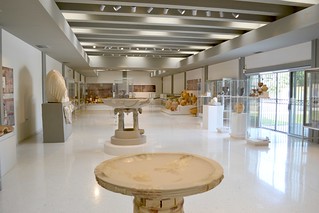
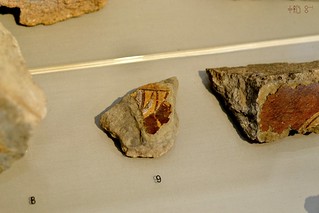

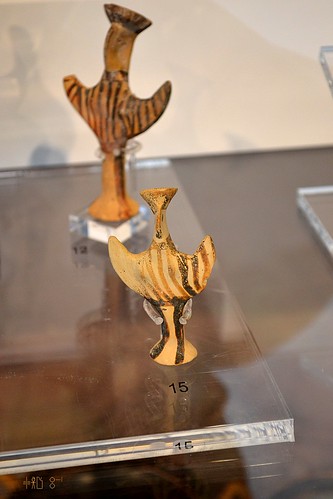
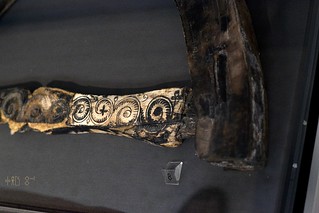
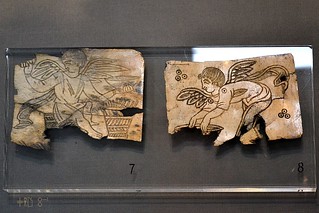
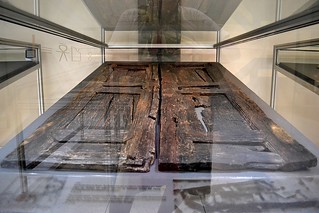
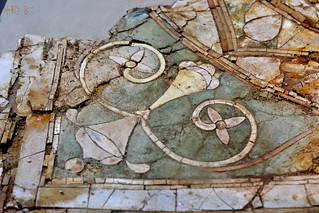
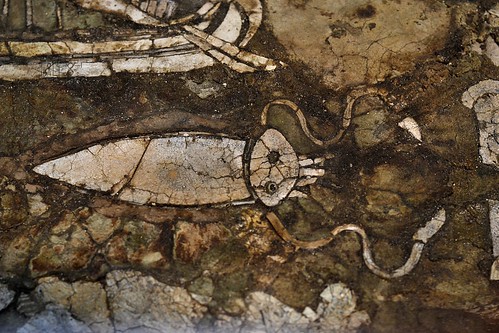
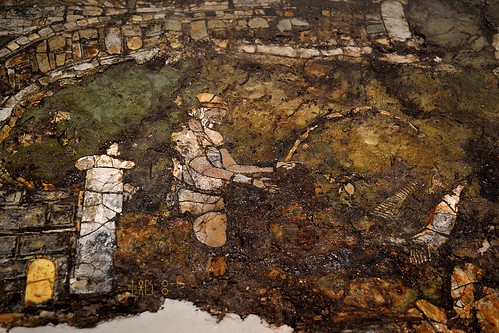

No comments:
Post a Comment